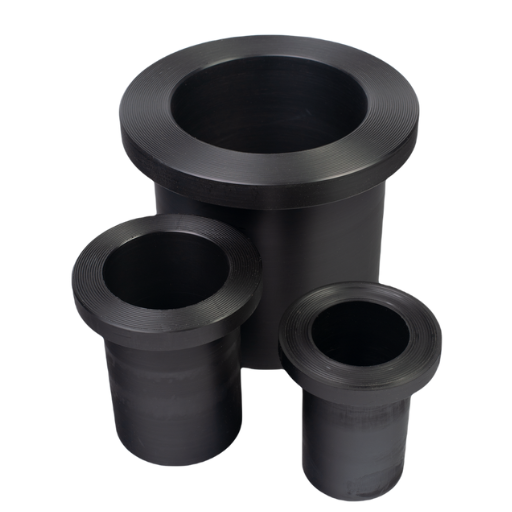These are socket fusion flange adapters; they are necessary for piping systems, especially those that use thermoplastic materials. They enable strong and tight connections that do not leak between pipes and flanged fittings. The article explores the implications of socket fusion flange adapters for specific industries, their main attributes and benefits, the socket fusion method itself, and how these devices can be used across different sectors. Thus, readers will have a thorough knowledge of this vital tool that ensures the maintenance of fluid transmission lines in all cases. This manual will enable you to choose wisely when working on your pipe projects, regardless of whether you are an experienced or a newbie.
What is a Socket Fusion Flange Adapter?
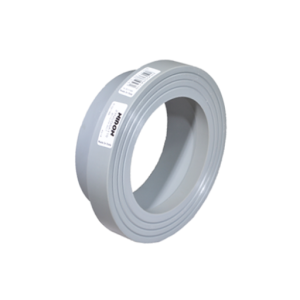
Image source: https://pprsupply.com/
A specialized fitting called a socket fusion flange adapter connects thermoplastic pipes to their corresponding flanged components seamlessly. Such an adapter does this by employing the process of socket fusion welding, where heat is applied at the ends of both the pipe and fitting, causing them to soften, thus enabling them to stick together after being joined. Socket fusion flange adapters are appreciated for their ability to form tight joints that last long without leaking; hence, they suitably fit into multiple uses, including water supply, wastewater management, and the chemical processing industry, among others.
Understanding Socket Fusion Fittings
A socket fusion fitting is essential to joining thermoplastic pipes by applying pressure and heat. The following components are needed to utilize these fittings: a compatible socketed pipe and a suitable fitting. In socket fusion, the ends of the pipe and fitting get heated to make them flexible enough to bond when subjected to pressure. As such, socket fusion fittings offer a smooth, strong, and secure joint under high-pressure situations, making it highly effective for water, gas, or other fluids applications. Additionally, the simplicity of installing them, reliability, and minimal ancillary equipment requirement compared to alternative joining techniques provide advantages for socket fusion fittings. These kinds of hardware are critical in upholding piping system integrity across diverse settings ranging from home plumbing systems to large-scale industrial installations.
How Does a Socket Fusion Flange Work?
The exact mechanism used with socket fusion fittings allows a connection between two pieces using heat at the end of each one, creating a weld at their point of contact, just like for this flange that operates on its principle. A heating tool is employed that warms up the inside flange connection parts and pipes until their thermoplastic constituents can become soft; after being heated sufficiently, the flange easily slides onto the pipe (Frankland et al. 105). Pressure should be applied so that materials fuse firmly when cooling down (it can be tight after being pressed against until cooled). It becomes a rugged leak-proof joint capable of handling higher pressures plus temperatures (Schleppinghoff et al. 2855). Because it works best compared with other methods and joints that last long under very harsh conditions within various piping systems, this approach has become popular in different industries where piping is involved.
Applications of Socket Fusion Flange Adapters in HDPE Pipe Systems
Because of their ability to create solid and reliable connections, socket fusion flange adapters are widely used in various HDPE pipe systems applications. Commonly, these adapters are used in water distribution systems to help control potable water flow efficiently. These fittings are also employed in irrigation systems, which integrate pipes that can bear excellent pressure from different levels. Furthermore, they are indispensable in industrial settings such as chemical processing because of their resistance to corrosion and durability, which ensure the safe transfer of chemicals. Besides improving performance within HDPE systems, these fittings significantly contribute to the durability and maintenance efficiency of the entire piping infrastructure.
How do you properly install socket Fusion flange adapters?
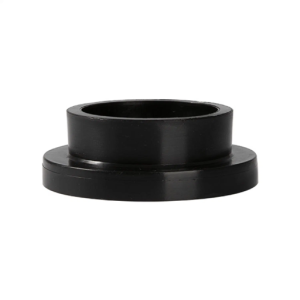
To install socket fusion flange adapters effectively, observe the following steps:
- Preparation: Ensure that both the pipe surface and the flange adapter surface stay clean without dirt, grease, or debris, as this will allow for proper fusion bonding.
- Heating: Use a socket fusion machine to simultaneously heat the flange adapter and pipe. Follow the manufacturer’s recommended temperature and heating time.
- Joining: Once materials have reached their required temperatures and softened, they are quickly removed from their heat source. Line up the pipe with a flange adapter, pressing them together tightly so they fit correctly but do not leave any gap between them.
- Cooling: During the specified cooling time, apply even pressure, allowing the materials to fuse into each other, creating a firm bond between them. Do not disturb joints during this stage.
- Final Inspection: Examine the joint after it has cooled down for visible gaps or irregularities; be assured about your installation quality before starting operation.
Adhering to these steps can help you attain a secure and leak-proof connection when using socket fusion flange adapters with your HDPE piping system.
Required Tools and Equipment
To succeed in the installation of socket fusion flange adapters, you must have these tools and equipment:
- The Socket Fusion Machine: This machine heats the pipe and flange adapter to ensure that they reach the right temperature for fusion.
- Cutting Tools: A saw or a cutter for pipe material such as HDPE should be used to cut it straight at whatever length one may want.
- Cleaning Materials: To clear all surfaces, particularly those made from HDPE, there must be wipes and clothes together with a cleaner compatible with HDPE materials.
- Measuring Tape: The correct fitting of the flange adapter can only be determined by taking accurate measurements.
- Clamps: These will help keep the joint in place until it cools down.
- Safety Gear: Glasses for their eyes and gloves are essential during this process to prevent harm when installing them.
These tools and equipment should make your joints strong and hasten installation processes.
Step-by-Step Installation Guide
- Preparation: Begin by collecting all the tools and equipment listed above. Then, ensure that everything is in order within the working area, enhancing the smoothness of operations during installation.
- Pipe Cutting: It would, therefore, require the use of a saw or an HDPE pipe cutter to carry out necessary cutting in line with the desired length, besides requiring clean cuts free from burrs that disrupt the fusion process.
- Cleaning: Also, wipe off contaminants on both ends of the pipes and the flange adapter using an appropriate cleaner for this form of plastic. That way, foreign substances will not compromise your bonding exercise.
- Heating: You, therefore, need to adjust your socket fusion machine’s temperature according to manufacturer-set standards and then put your pipe plus flange adapter into it so heating can take place within given time frames according to instructions from their manufacturers.
- Joining: Remove quickly from machines immediately after heating, twisting around slightly during immediate fitting to ensure consistent uniformity.
- Cooling and Pressuring: Hold the joint without disturbance for the specified duration of cooling. Thus, the materials will bond tightly.
- Final Check: When the joint is done, look at it to see its gaps or other imperfections; however, such a check has to be carried out first to be sure that this joint is strong enough to be used in future stages of pipeline installation.
Thus, following all these stages will allow you to properly set up your socket fusion flange adapters and achieve secure leak-resistant joints in your HDPE piping systems.
Common Mistakes to Avoid During Installation
- Preparation Steps Skipped: Failure to thoroughly clean and examine pipe ends before fusion may result in weak joints. The surfaces must be free of dirt to ensure strong bonding.
- Incorrect Heat Settings: Improper temperature settings for socket fusion machines can overheat or underheat materials, leading to poor-quality fusions. Follow the manufacturers’ instructions.
- Rushing the Cooling Phase: A joint can fail when pressure is released too early. To ensure a lasting bond between pipes and fittings, you must maintain the pressure for a recommended cooling time.
Observe these common pitfalls to increase your success rate with socket fusion installations significantly.
What Are the Benefits of Using Socket Fusion Flange Adapters?
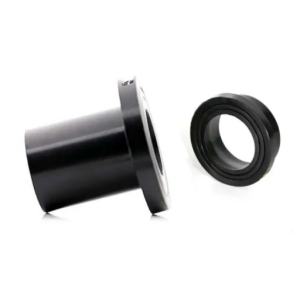
Socket fusion flange adapters have many benefits when used in HDPE piping systems. First, they provide a reliable connection that is watertight and preserves system integrity throughout its lifetime. Secondly, their ease of installation allows for faster project completion than other joining methods because socket fusion is generally quicker than other joining alternatives. Additionally, these adapters are corrosion-resistant and can survive in harsh environmental conditions, implying that they can be deployed in different areas. Lastly, due to their flexibility in design and compatibility with standard flanges, they can be easily integrated into existing systems, improving overall functionality and performance.
Durability and Strength of HDPE Socket Fusion Fittings
They are well known for their exceptional durability and strength, making them preferred in many industrial applications. The fusion process ensures a uniform connection between the fittings and pipes; hence, they form strong joints able to withstand high pressures without leaking. Besides, HDPE is inherently impact-resistant, which enables these fittings to retain their integrity even under demanding conditions. They also do not rust; thus, they do not get attacked by chemicals or moisture as opposed to metallic fittings. This elasticity saves on the overall cost of maintenance of the piping system. It prolongs its useful life, thereby making HDPE socket fusion fittings a cheaper alternative in the long term.
Cost-Effectiveness Compared to Other Methods
The cost-effectiveness of HDPE socket fusion fittings compared to other joining methods depends upon several factors. For one thing, initial costs for HDPE materials may be higher, but extensive savings over time due to lower replacement or maintenance outlays should be noted. According to some studies, this type of pipe can be installed at lower costs because it takes less time than traditional welding or mechanical joints. In addition, low-frequency replacements and repairs are required because HDPE does not rust or corrode easily, which adds up towards its cost-effectiveness in terms of repairment expenditure since there aren’t so many regular changes, unlike in past years when metal ones were primarily used for repairing purposes. In general, although the initial price may differ as regards life cycle cost analysis however, the longevity, minimal servicing requirements together, and inherent efficiencies associated with HDPE socket fusion fittings form a compelling argument for their preference across diverse applications compared with other methods available on the market today.
Versatility in Various Applications
HDPE spigot weld fittings are highly adaptable and can be applied in various areas, from municipal water supply systems to industrial processes. The fittings’ lightweight nature makes them easy to install, which is why they are ideal for use in aboveground and underground facilities. In the agricultural sector, these fittings are commonly used for irrigation systems due to their ability to withstand varying pressures and resist chemical attacks. HDPE’s flexibility allows it to change its shape quickly whenever pipes are misaligned, especially when dealing with complex installations. Further, oil and gas industries, among others, have since turned to high-density polyethylene (HDPE) for harsh environments where usual materials might fail. This versatility under different conditions and uses characterizes HDPE socket fusion fittings as the choice of engineers and contractors.
Comparing Socket Fusion to Butt Fusion Methods
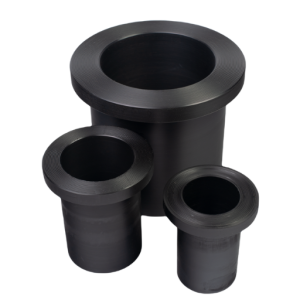
There exist two standard methods for joining high-density polyethylene (HDPE) pipe; socket fusion and butt fusion, which each have unique benefits depending on the situation at hand. Socket fusion implies heating both the fitting’s ends and the pipe until they liquefy, then pressing them together firmly. This is more important where smaller diameter pipes are involved since it facilitates quicker connections using less equipment.
On the other hand, butt fusion is designed for larger diameter pipes whereby the ends of two pipe sections are aligned and then heated till they become molten, after which they are pressed together. It leaves a strong joint that runs continuously through the system, making it suitable for high-pressure applications. While socket fusing usually provides an easier and faster means of connection for small-scale jobs, butt fusing tends to offer greater strength and stability in larger setups. In conclusion, either method may be chosen based on the size of a pipe, pressure ratings, and installation conditions.
Differences Between Socket Fusion and Butt Fusion
Socket fusion and butt fusion vary mainly in terms of the way they join pipes and fittings, as well as their areas of application. Socket fusion is a quick method that works best with small-diameter pipes where the ends of the pipe and fitting are heated and brought together. This technique is simple yet fast, thus requiring less equipment and fewer installation steps. On the other hand, butt fusion is more suitable for larger pipes since it aligns and melts pipe sections’ ends into a single continuous joint that has high-pressure resistance. Furthermore, buttfusion allows for stronger joints by eliminating fittings; hence, it is preferred in systems intended to be highly stable and reliable. The ultimate determination between these two techniques will depend on specific project factors such as pipe size, pressure requirements, and level of installation complexity.
Advantages of Socket Fusion for Small-Diameter Pipes
The speed at which socket fusion can be done makes it ideal for smaller diameters; this process is efficient during installation. One significant advantage is that only a little equipment is needed, making it cheaper when resources are limited. This means that assembly is much faster, leading to lower labor costs and shorter project timeframes using simple techniques purposefully intended to reduce worker involvement costs, thereby making a difference in construction periods or schedules. Another aspect of socket fusion connections is their ability to provide leak-free solid joints, ensuring low to medium-pressure applications have high integrity levels. In addition, there are fewer emissions from this method because no additional fittings are required; hence, it promotes environmental friendliness while remaining sustainable concerning the nature of piping solutions used.
Choosing the Right Method for Your Project
To choose between socket fusion and butt fusion for your piping project, it is important to evaluate several critical factors. Consider the pipe diameter in question since socket fusion is easier to handle and can be installed quickly, making it suitable for small pipes. However, butt fusion should be used with larger diameter pipes which produce stronger joints that can resist high pressures. Then determine the required pressure for your project; butt fusion will usually outperform other methods as regards stability of systems that require higher performance. Also, the project’s complexity greatly matters; for instance, simple low-resource projects benefit from socket fusion due to its minimal equipment requirements and reduced labor expenses. Finally, environmental considerations are also crucial because socket fusion uses no fittings, generating less waste than other alternatives, thus making it greener. Considering these aspects, you can identify an appropriate method of joining plastics that meets your needs.
Where to Buy High-Quality Socket Fusion Flange Adapters?
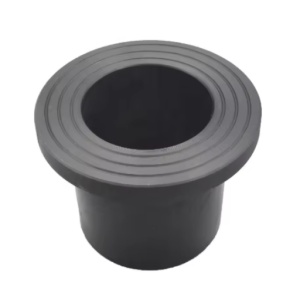
Suppliers specializing in plumbing and piping materials offer a full range of first-rate socket fusion flange adapters. Online marketplaces such as Amazon or eBay and specialized industrial supply sites like McMaster-Carr or Grainger have plenty of options. In addition, they may be found at local plumbing supply stores or hardware outlets. It would also be most beneficial to compare prices, look at product reviews, and check whether these items meet all relevant industry standards concerning quality and safety. If you want them in bulk, you could get them directly from producers who might give better rates depending on availability.
Top Suppliers and Manufacturers
- McMaster-Carr
McMaster-Carr is a renowned provider of industrial supplies, such as socket fusion flange adapters. Their wide range of products comes with detailed specifications and prompt shipment options. The website is friendly to users, as it assists in easily searching for desired items, thus making procurement efficient for projects.
- Grainger
Grainger is also a major distributor of maintenance, repair, and operational supplies. Its inventory includes high-end socket fusion flange adapters from reputable brands. It offers valuable customer care services and has experts on board who can help in adapter selection based on the project’s needs.
- Ferguson
Ferguson offers a variety of socket fusion flange adapters and fitting options for plumbing and HVAC markets. This firm emphasizes quality and dependability by providing products from trusted sources. Additionally, it provides resources and advice to professionals who want to make informed purchases.
Shop by Price: Finding the Best Deals
To get reasonable prices on socket fusion flange adapters, one should compare prices across different reputed web pages such as:
- Amazon
Amazon has a vast marketplace for these items and competitive pricing. User reviews and ratings support customers’ buying decisions, while multiple sellers offer varying prices that facilitate easy comparison.
- eBay
eBay provides an ideal platform where individuals may potentially find new or used socket fusion flange adapters at lower prices. Good bargains can be acquired through auctions or “Buy It Now,” while seller ratings provide some form of trustworthiness.
- Home Depot
Home Depot regularly has promotions/sales regarding plumbing supplies like socket fusion flange adapters. Therefore, consumers visiting their site can filter by price to instantly access budget-friendly choices that can be picked up at stores or delivered to homes.
Using these platforms, customers can navigate pricing effectively, revealing the best deals available today.
Factors to Consider When Purchasing
Several crucial factors might influence your decision when choosing socket fusion flange adapters. Given below are some important considerations:
- Material Quality
Make sure that the sockets are made of high-quality materials like long-lasting PVC or CPVC, which is necessary for preserving integrity during pressure and temperature fluctuations.
- Compatibility
Ensure that the existing plumbing system can handle the flange adapter. It should match sizes and types to avoid leaks and ensure proper installation.
- Price and Value
Consider the cost alongside other determining factors, such as value. Compare different prices on Amazon, eBay, and Home Depot in relation to shipping costs and warranties.
- User Reviews
Find out what others have said about how reliable these units are. Such feedback will help you learn more about their durability issues, if any, and how they perform over time.
- Return Policy
Know how the return policy works for your supplier. When some products may not meet your expectations, flexible return policies can provide an added level of assurance.
Bear these points in mind while buying socket fusion flange adapters so you make an informed choice.
Expert Tips for Managing Your Socket Fusion Projects
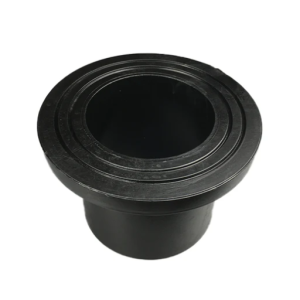
Careful planning and execution are required to manage socket fusion projects successfully. Here are some professional tips to ensure operations run smoothly:
- Thorough Planning
Start with a transparent project plan that includes finance, time frame, and means. This will help in foreseeing challenges and running all activities smoothly.
- Training and Skill Development
Make sure that all team members have acquired enough skills in socket fusing techniques. Regular training sessions can make work more efficient and minimize mistakes.
- Quality Control Checks
Have a system where quality checks are done regularly during installations to identify issues early enough before they become expensive repairs.
- Use the Right Tools
Invest in high-quality tools that specifically suit socket fusion. This ensures accuracy in your projects and, hence, better performance.
- Documentation
Keep detailed records on all materials used, dimensions, and installation processes. Proper documentation makes problem-solving more accessible and provides valuable references for future assignments.
Following these tips will enhance the efficiency and outcomes of your socket fusion work, ensuring that you deliver satisfactory results to happy customers.
Ask Our Experts: Common Questions Answered
This part of the paper addresses some FAQs on socket fusion and its application in projects. It provides an answer to each question based on insights.
- What materials are best for socket fusion?
Polyvinyl chloride (PVC) and high-density polyethylene (HDPE) are among the best materials for socket fusion because they adhere well to heat and are durable when used in joints.
- How do I ensure a proper socket fusion joint?
To achieve proper joints, clean and adequately sized socket fittings are essential. In addition, heating times and cooling periods, as specified by manufacturers, should be observed.
- What are the common issues faced during socket fusion?
Fitting misalignment, inadequate heating time, and contaminants on fused surfaces are among common defects. Implementing regular training programs and quality control measures can mitigate these issues.
These common inquiries address these issues to guide individuals undertaking socket jointing tasks.
Best Practices for Long-Term Maintenance
To ensure that socket fusion installations last long and perform optimally, consider the following best practices as outlined:
- Inspection: Regularly inspect to detect wear and tear, misalignment, or damages. Leaks or changes in pressure are indications of underlying problems that should be addressed immediately.
- Hygiene: The surrounding areas near the fusion joints should be kept free from waste materials and harmful chemicals, which would otherwise cause joint failure with time.
- Temperature Regulation: It is essential to operate within the recommended temperature limits of the materials used. This can avoid degradation caused by extreme cold or heat.
- Training and Certification: Staff should be regularly trained on up-to-date socket fusion best practices and technologies. Certification programs ensure that every member understands the right procedures and safety protocols.
- Documentation and Record Keeping: Detailed records for all maintenance activities, inspections, and repairs should be kept. Such data is useful for continuous monitoring of system health and provides valuable insights for future projects.
By implementing these best practices, you will considerably increase the life span and reliability of your socket fusion projects, reduce repair instances, and delight customers more.
Connecting with Industry Professionals
To develop your knowledge and open up more opportunities, you need to establish connections with professionals in the industry, especially for socket fusion and other pipeline installation practices. Here are some practical approaches on how to network:
- Attend Industry Conferences and Trade Shows: When you attend conferences centered around fusion technology or pipeline infrastructure, you meet experts, exchange ideas, and learn about the latest developments in this area.
- Join Professional Associations: Becoming a member of organizations such as Plastics Pipe Institute (PPI) or its likes can provide access to professionals’ networks, training materials and updates, and news that may help create valuable acquaintanceships.
- Leverage Online Platforms: LinkedIn is one of the platforms that can be effectively used for connecting with market leaders. Engaging in relevant groups will also enable you to share views and participate in discussions, which will make people recognize you and expand your professional contacts.
By actively involving yourself in these activities, you can create significant opportunities for career enhancement and success within Socket Fusion and related projects.
Reference sources
- ASTM International – Standard Practice for Heat Fusion Joining of Polyethylene Pipe and Fittings
https://www.astm.org/Standards/F2620.htm
This standard provides guidelines on heat fusion techniques, including Socket Fusion Flanges for creating solid and reliable joints in polyethylene piping systems. - ASTM International – Standard Specification for Polyethylene (PE) Plastic Pipe (DR-PR) Based on Controlled Outside Diameter
https://www.astm.org/Standards/D3035.htm
This document provides the specifications for polyethylene plastic pipes and fittings, including socket fusion flange adapters. Understanding the standards and quality requirements for these adapters is essential. - Performance Pipe – Fittings and Fabrications Designed and Engineered for High-Density Polyethylene Pipe
https://www.performancepipe.com/en-us/resource-center/fittings-and-fabrications.html
This document outlines various HDPE fittings, including socket fusion flange adapters. It provides detailed guidance on the specifications, standards, and installation practices, ensuring reliable performance in piping systems.
Related Articles: Socket Fusion Flange Performance Description



